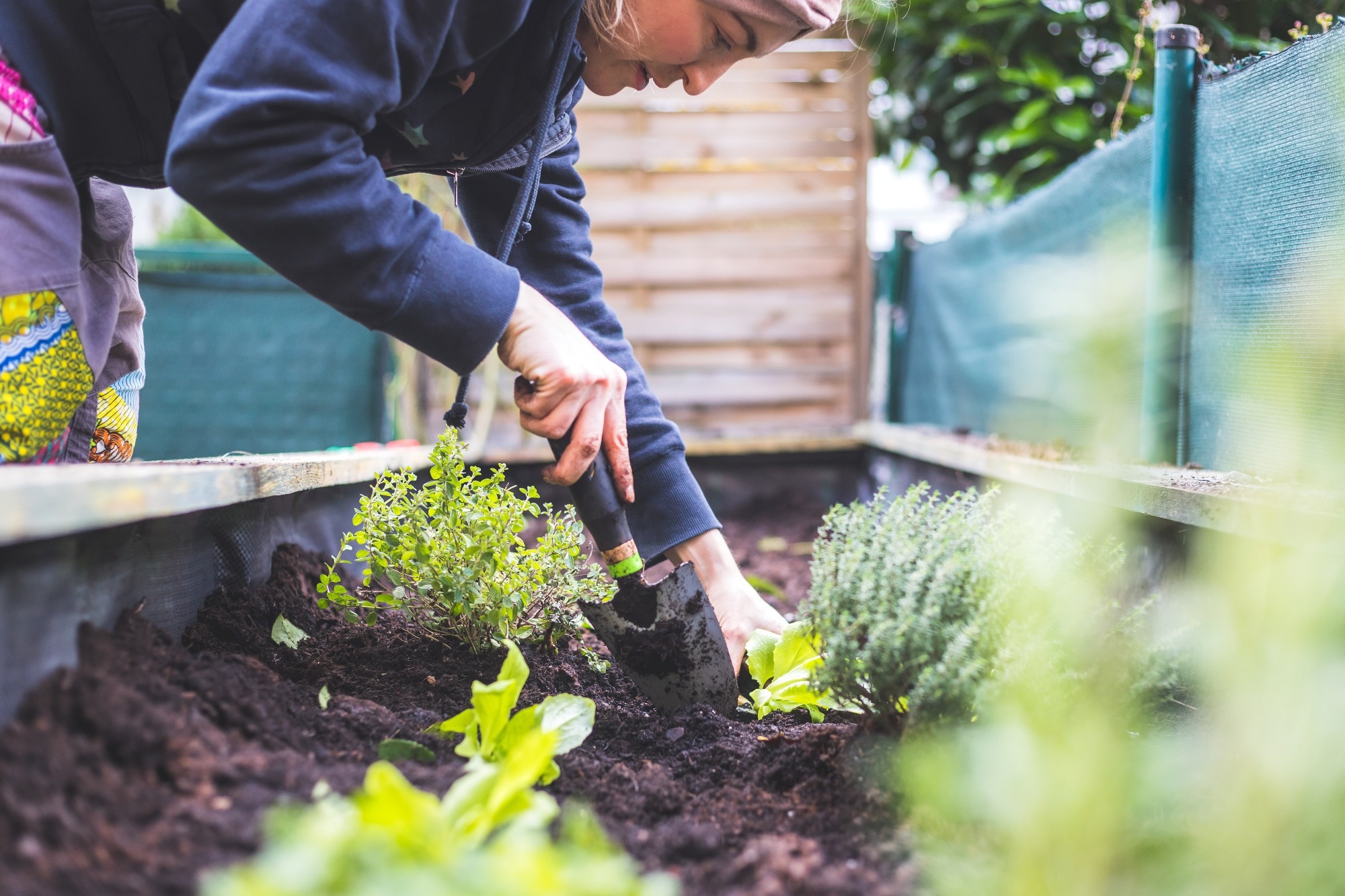In a recent study published in Scientific Reports, researchers examined the level of microplastics (MPs) among lettuces cultivated in urban gardens in Lisbon and compared them to those grown in rural areas and those purchased from supermarkets.
 Study: Microplastic contamination of lettuces grown in urban vegetable gardens in Lisbon (Portugal). Image Credit: Patrick Daxenbichler/Shutterstock.com
Study: Microplastic contamination of lettuces grown in urban vegetable gardens in Lisbon (Portugal). Image Credit: Patrick Daxenbichler/Shutterstock.com
Vegetable gardens in urban locations can be a sustainable solution for urban residents, but they are often vulnerable to pollution as cities are pollution hotspots due to sources such as traffic.
Microplastics, small plastic pieces of less than 5 mm in size, pose a significant health issue because of their environmental contamination. Given the high traffic levels in urban areas, hypothesized to be a key contributor to increased MP levels in urban gardens, it is crucial to evaluate MP bio-accumulation among vegetables grown in urban gardens.
This will help to assess consumer exposure and probable intake of contaminants through the food chain.
About the study
In the present study, researchers assessed the level of MPs acquired by such products to determine the possible exposure of citizens to MPs through the dietary intake of lettuce grown in vegetable gardens situated in urban regions.
Smooth leaf lettuce (SLL) and beaded leaf lettuce (BLL), two lettuce varieties widely grown in urban vegetable gardens, were studied.
The elemental composition of lettuce samples was also analyzed to identify possible sources of microplastics infecting lettuce samples, and Spearman's Rank correlation coefficients between microplastics and each chemical element were calculated. Particle-induced X-ray emission (PIXE) was used to assess copper and sulfur contents.
Lettuce samples were obtained from urban gardens in Lisbon, and one rural region of inland Portugal. In addition, both lettuce varieties were bought from a supermarket supplier in Portugal as controls, since lettuce is typically grown in farming regions in Portugal and the product is commonly bought by individuals for consumption.
On June 11 and 15, 2021, lettuce samples were collected in rural and urban areas, respectively. The team evaluated 42 samples of lettuce independently (14 distinct samples with duplicate samples). The fiber length ranged from 336 to 2,078 µm in the lettuce samples, whereas the grain size of the produced lettuce powder ranged from 36 to 94 µm.
MP identification criteria were as follows: (i) the fiber is unnaturally colored (red, blue, purple, green, grey, or black) when compared to other detritus/particles; (ii) the fiber has homogeneous texture and material devoid of visible cell structures and offshoots and is consistently wide throughout; (iii) the fiber stays intact even after compression, tugging, and poking.
Plastic fragments or microfibres that were not stained after using a stain helping to distinguish between organic and non-organic matter, and satisfied at least two of five MP criteria, were categorized as MPs.
Results and discussion
All washed leaves contained microplastics, with mean levels ranging from 6.3 to 29.4 MPs/g. Lettuce planted in urban gardens in high-traffic areas contained higher MP levels. Weak positive relationships were found between microplastic content and sulfur and copper concentrations, indicating that traffic may have a role in MP levels, as these elements are considered traffic-source tracers.
The team found 101 microplastic particles in 14 distinct lettuce samples, with 10% and 90% classified as pieces and fibers, respectively. Among 42 samples, six were devoid of microplastic pieces and fibers.
Microplastic levels did not differ substantially between lettuce varieties, with mean MP concentrations of 18.9 and 15.3 MPs/g in BLLs and SLLs, respectively. Both lettuce varieties had similar microplastic levels per gram amounts in commercial lettuce samples (10.8 MPs/g and 10.6 MPs/g).
SLL samples produced in the countryside had similar MP content to commercial lettuce samples (10.9 MPs/g), whereas BLL had 21.4 MPs/g.
Except for the U7 site, where microplastic levels in smooth leaf lettuce were close to commercial lettuce sample values, namely 11 microplastic pieces per gram, and beaded-leaf lettuce exhibited the lowest level reported in the study across samples: six microplastic pieces per gram, lettuce cultivated in urban vegetable gardens frequently showed higher MP contamination.
The remaining locations in urban regions showed values ranging from 13 to 29 microplastic pieces per gram.
Levels of more than 20 microplastic pieces per gram for the two types of lettuces were detected at three sites situated near busy roadways. MPs detected in lettuce cultivated in the city revealed varied MP concentrations, with discrepancies across places most likely attributable to nearness to high-traffic roadways and situations of poor atmospheric dispersion.
For example, U7 was near a roadway, yet given the open circumstances, the lettuce sampled from this site showed the least MP content. MP concentration was the highest near high-traffic roadways or business and residential structures at sites U3-U5. The U5 urban park was built in an area bordered by homes and was located 300 meters off the main highway of Lisbon.
Mulching was not used in any of the vegetable plots investigated, indicating that possible MP contamination of soils should come from sources other than mulching. Commercial lettuce, produced in low-pollution agricultural areas, may be harmed by local air pollutants in rural areas.
The findings indicated that traffic, especially in tiny settlements, should not be overlooked. Other local sources of MP pollution, such as burning vegetable waste and solid household garbage, may also contribute to greater levels of MP contamination in rural regions.
Conclusion
Overall, the study findings showed that microplastic contamination in lettuce in urban environments is a significant issue, with a 70% increase in annual intake compared to lettuces purchased in supermarkets.
Traffic-associated chemical elements, copper and sulfur, showed positive associations with MP levels, indicating that lettuce consumption as a common food source may contribute to MP exposure among humans.